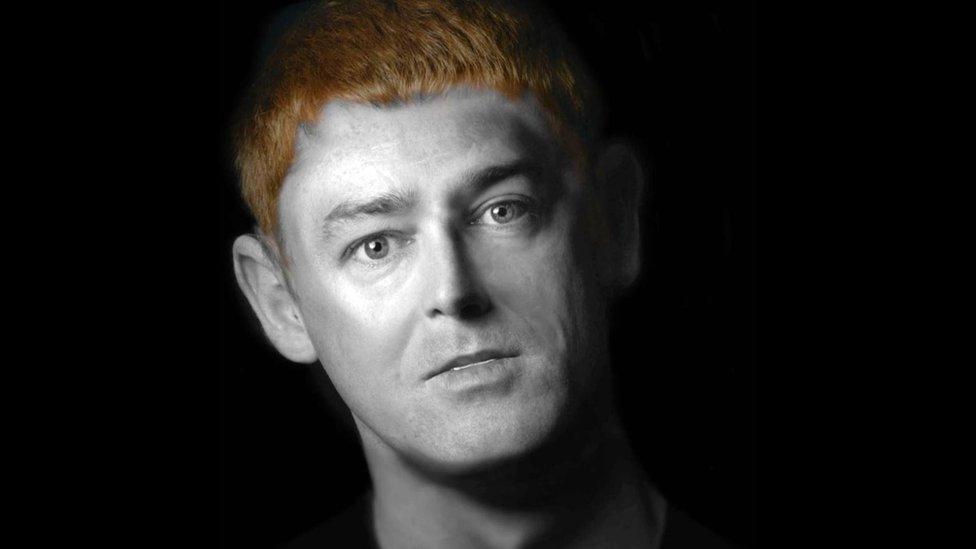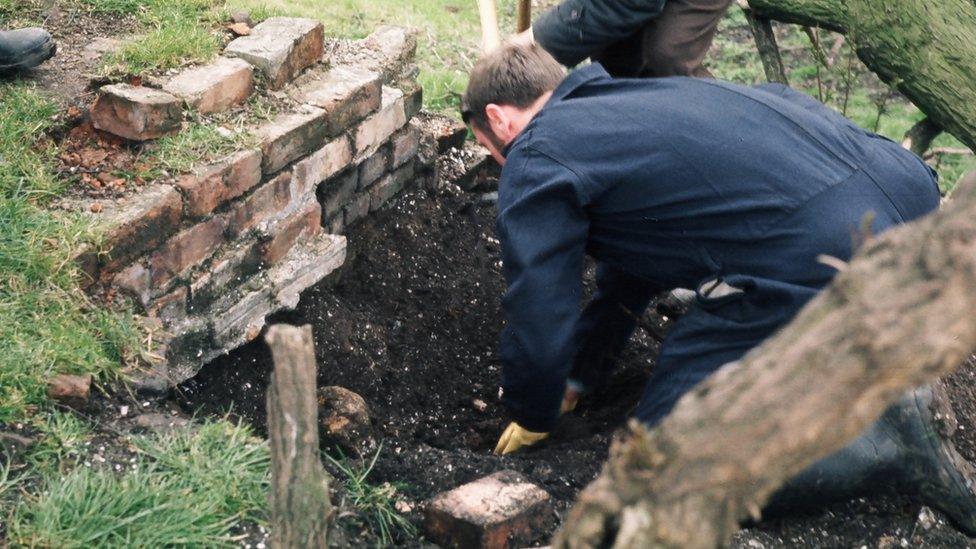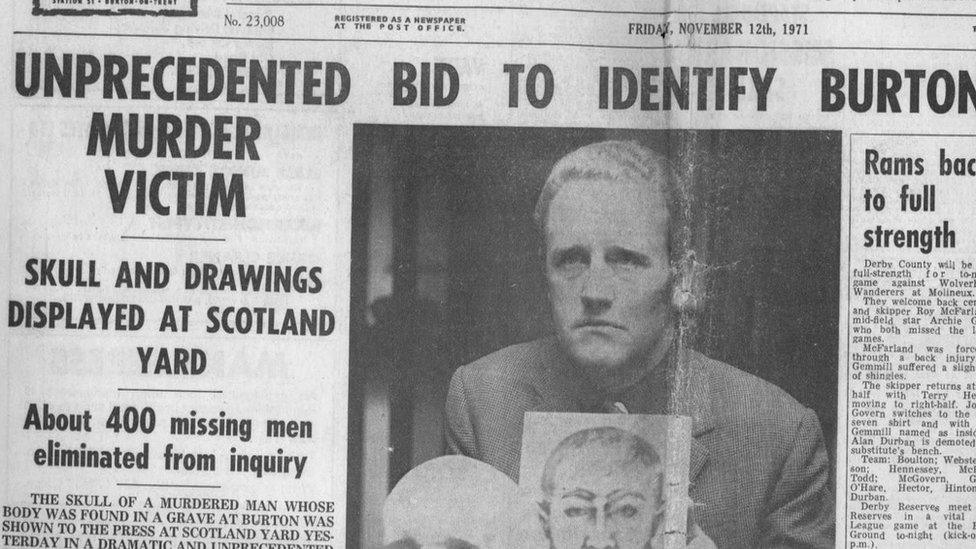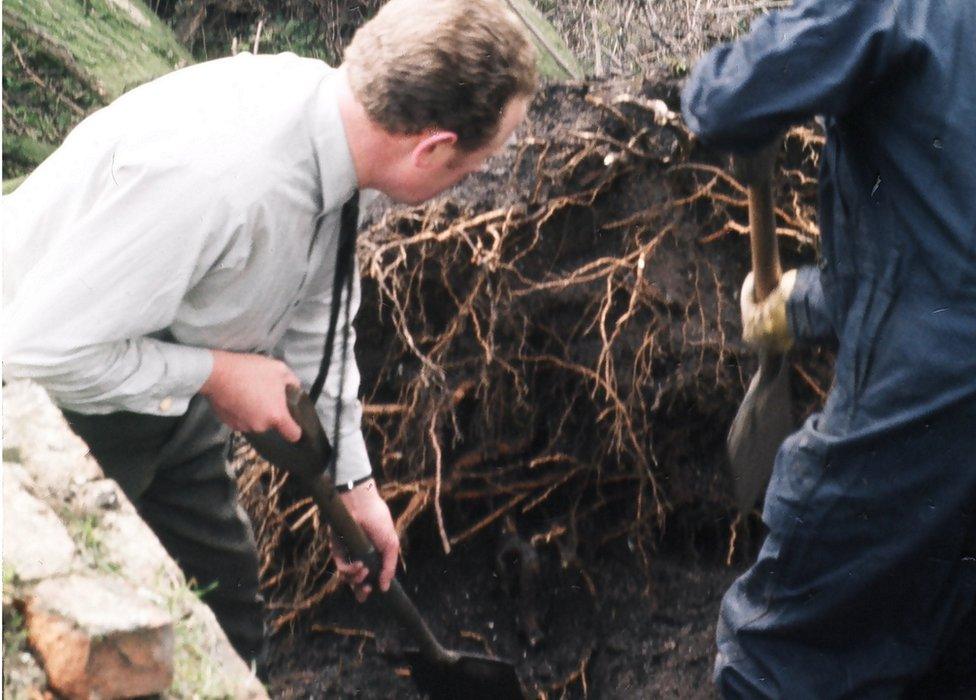Mystery murdered man 'could be from north Wales'
- Published

The facial reconstruction was revealed on BBC's Crimewatch Roadshow
An unidentified body found buried in a shallow grave 46 years ago could be that of a missing man from north Wales.
The murdered man, found near the banks of the River Trent in Staffordshire in 1971, could be John Henry Jones from Trevor in Wrexham, police have said.
The man's body was found naked with his hands and feet tied. Now his face has been reconstructed using the latest medical and digital techniques.
The name came to light after a dental expert reviewed missing person records.
Mr Jones, 27, went missing in 1970.
He was born on 30 April 1943 and lived in George Avenue in the village that lies between Llangollen and Wrexham.
Police want to speak to anyone who knew knew him.

Missing persons, dental and fingerprint records failed to uncover the identity of the body dubbed "Fred the head"
Officers who investigated at the time, believed the man, who was found wearing nothing but a pair of pink socks and a wedding ring, had been murdered.
The make-shift grave was discovered in Burton-on-Trent by an off-duty police officer. The body had been there for between 12 and 18 months.
Retired Det Ch Insp Peter Hough who was in charge of the investigation said: "I personally hadn't come across anything like it because of the local attention it received.
"The town was a buzz. Still people ask about it."
'Baffling'
He said despite "every effort" being made to identify the body, missing persons, dental and fingerprint records failed to reveal who he was and the police were unable to determine how he was killed.
"It's never been out of my mind after all these years but I'm still optimistic," he said.
Now, in a final attempt to identify him, Prof Caroline Wilkinson, from Facelab at Liverpool John Moores University, has created an image of his face.
She said: "This is as accurate as we can get in terms of a depiction."
The method has been tested on living people and about 70% of the reconstructed face should be accurate to less than 2mm.
The facial image was broadcast on BBC's Crimewatch Roadshow in the hope someone will recognise him.

A newspaper cutting from the time details the inquiry

Retired Det Chf Insp Peter Hough at the scene where the body was found in 1971